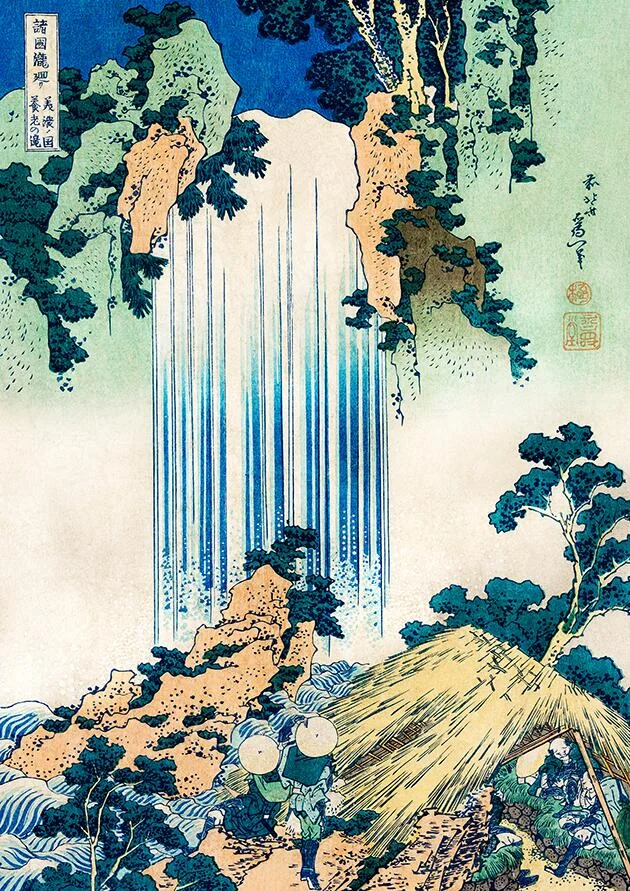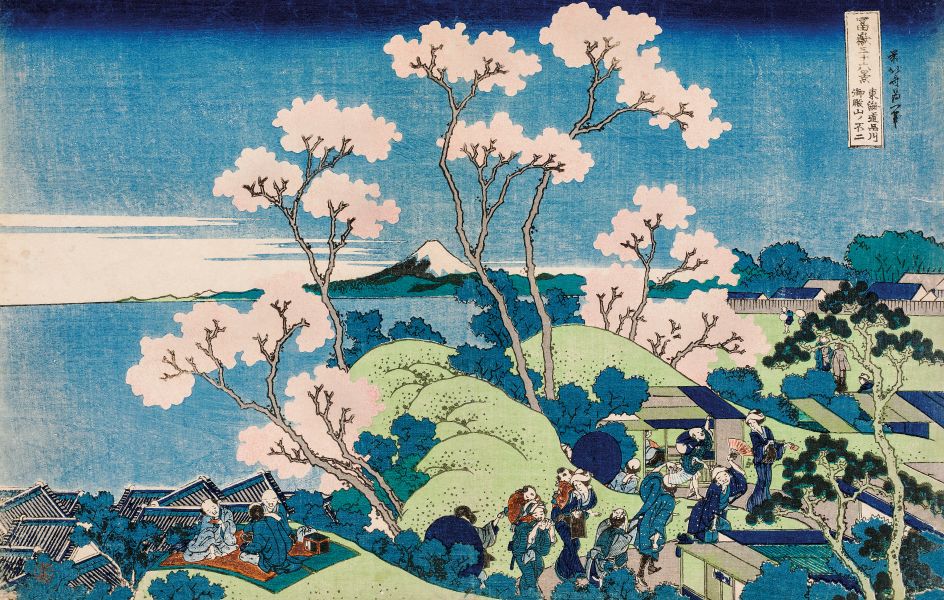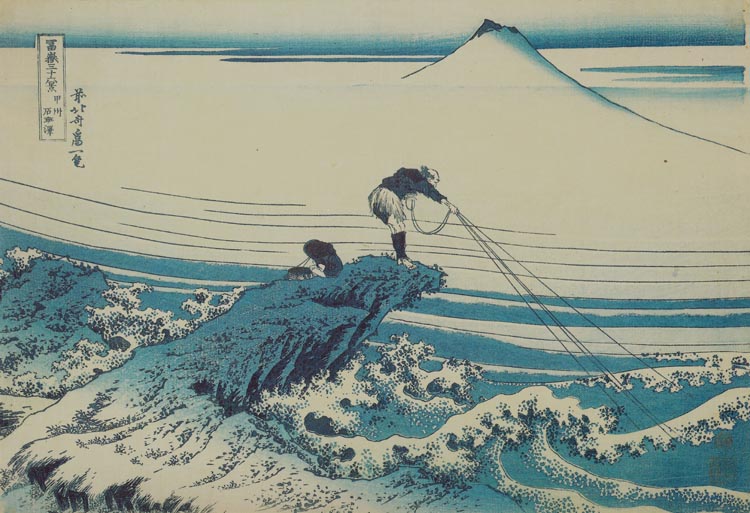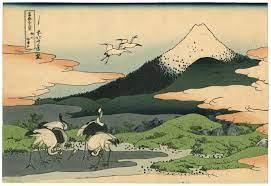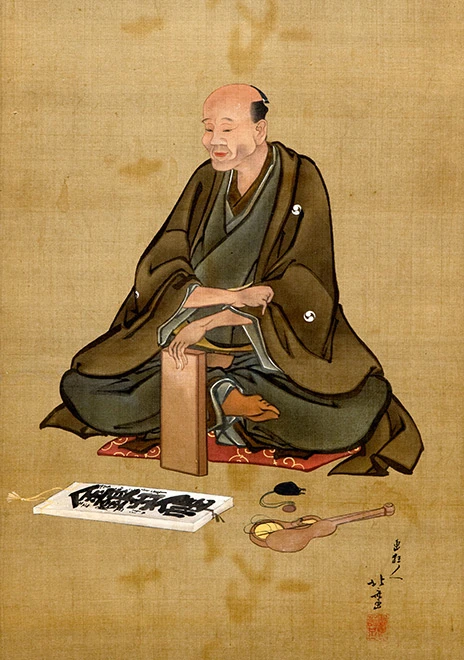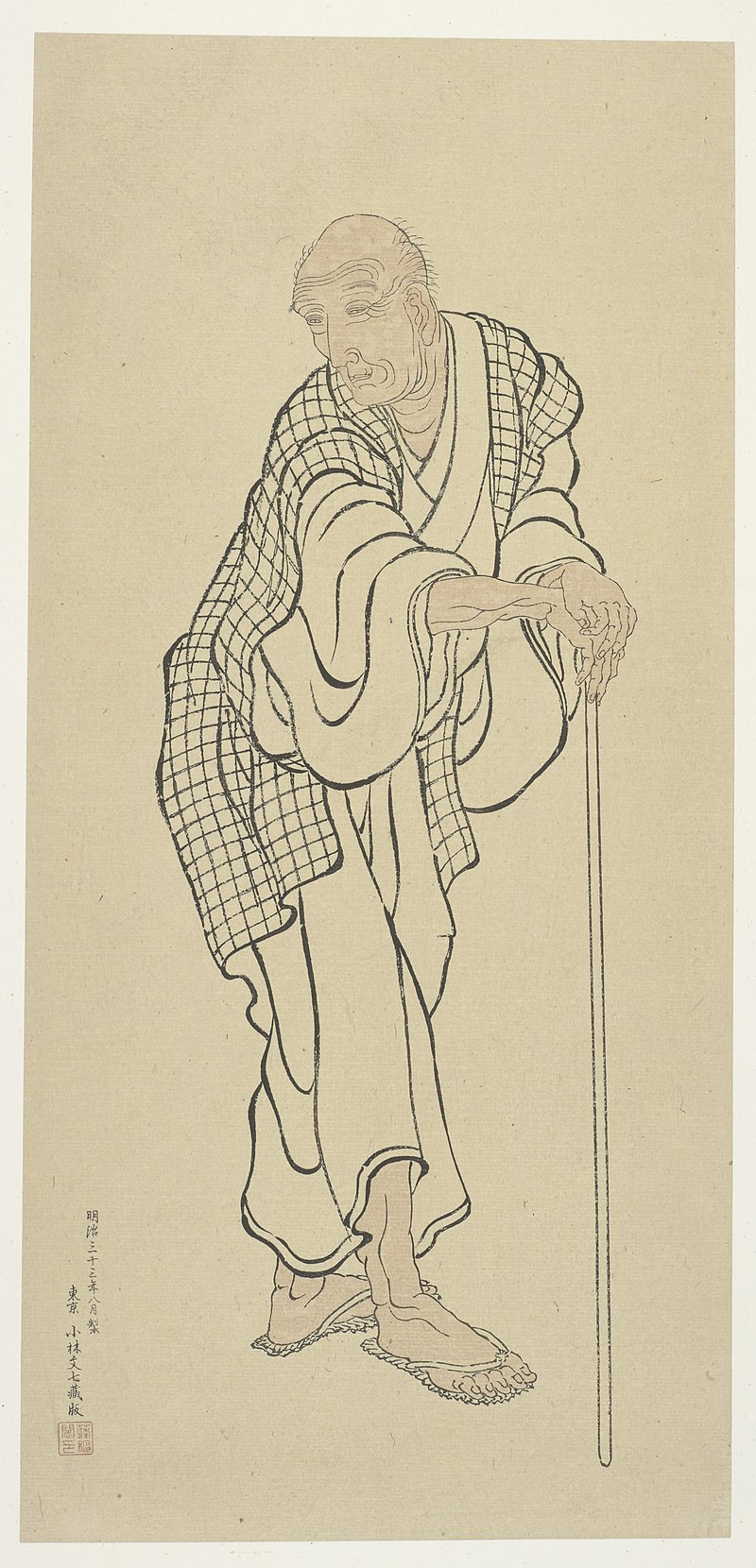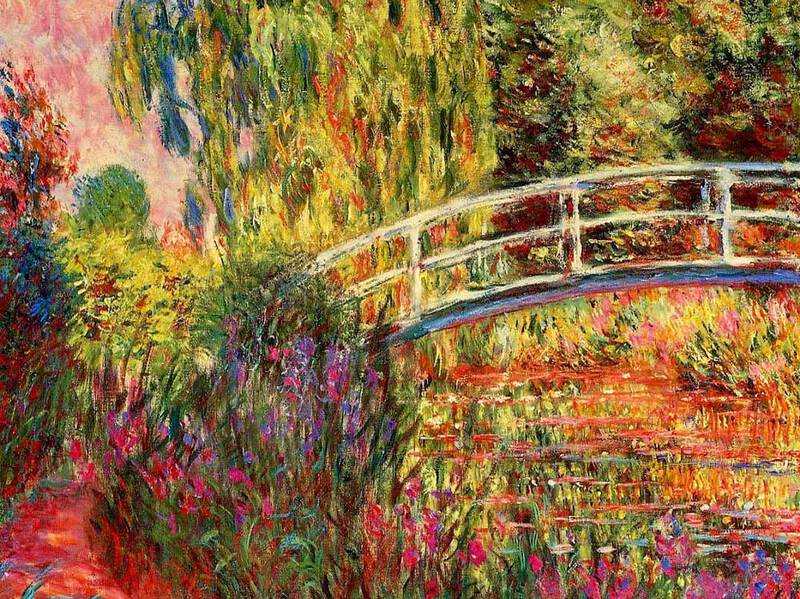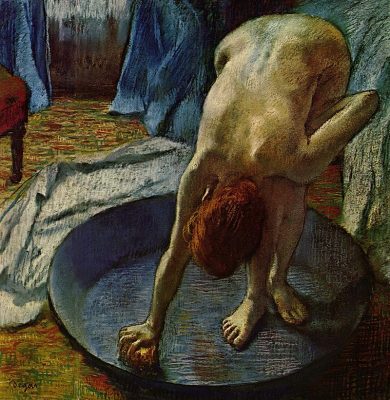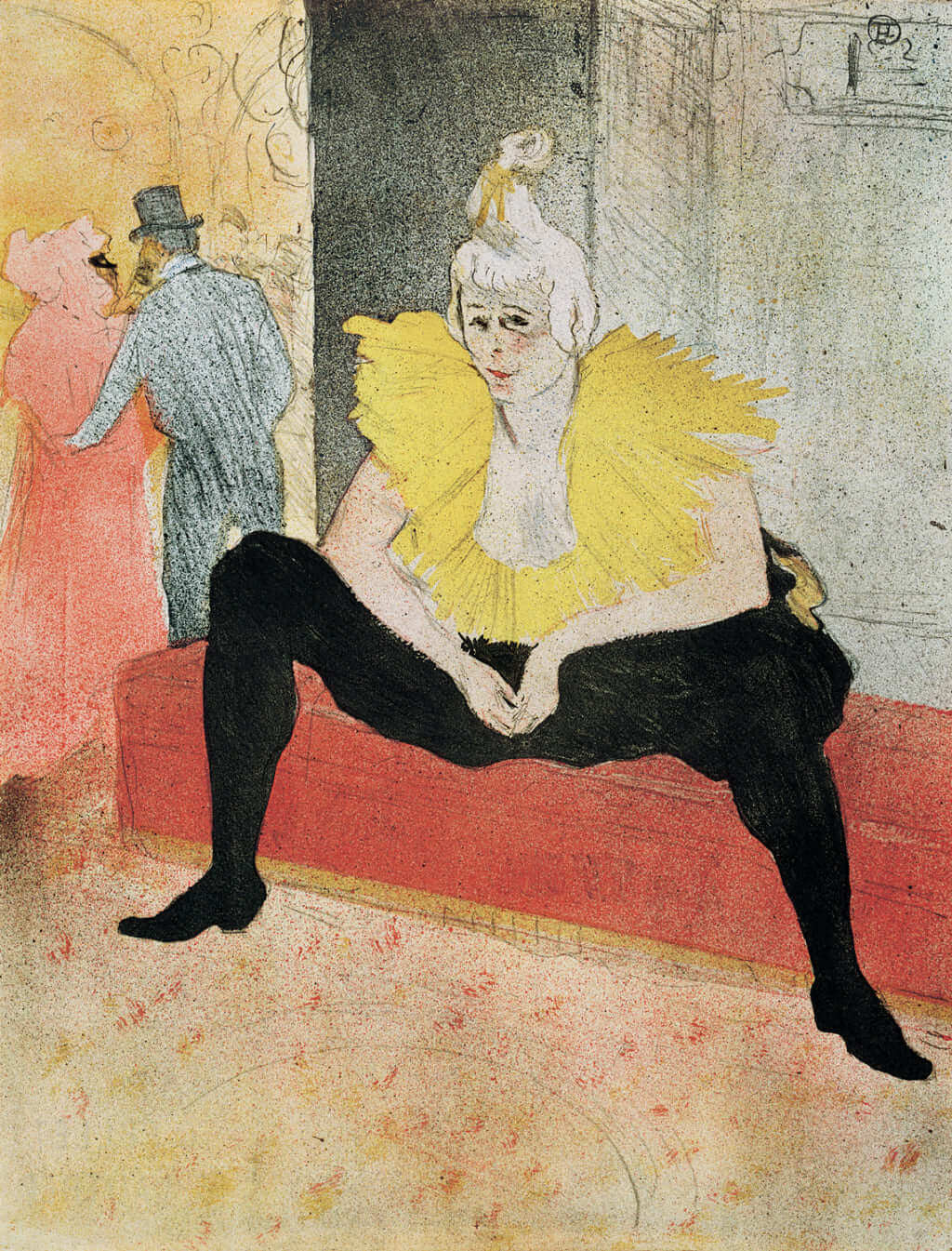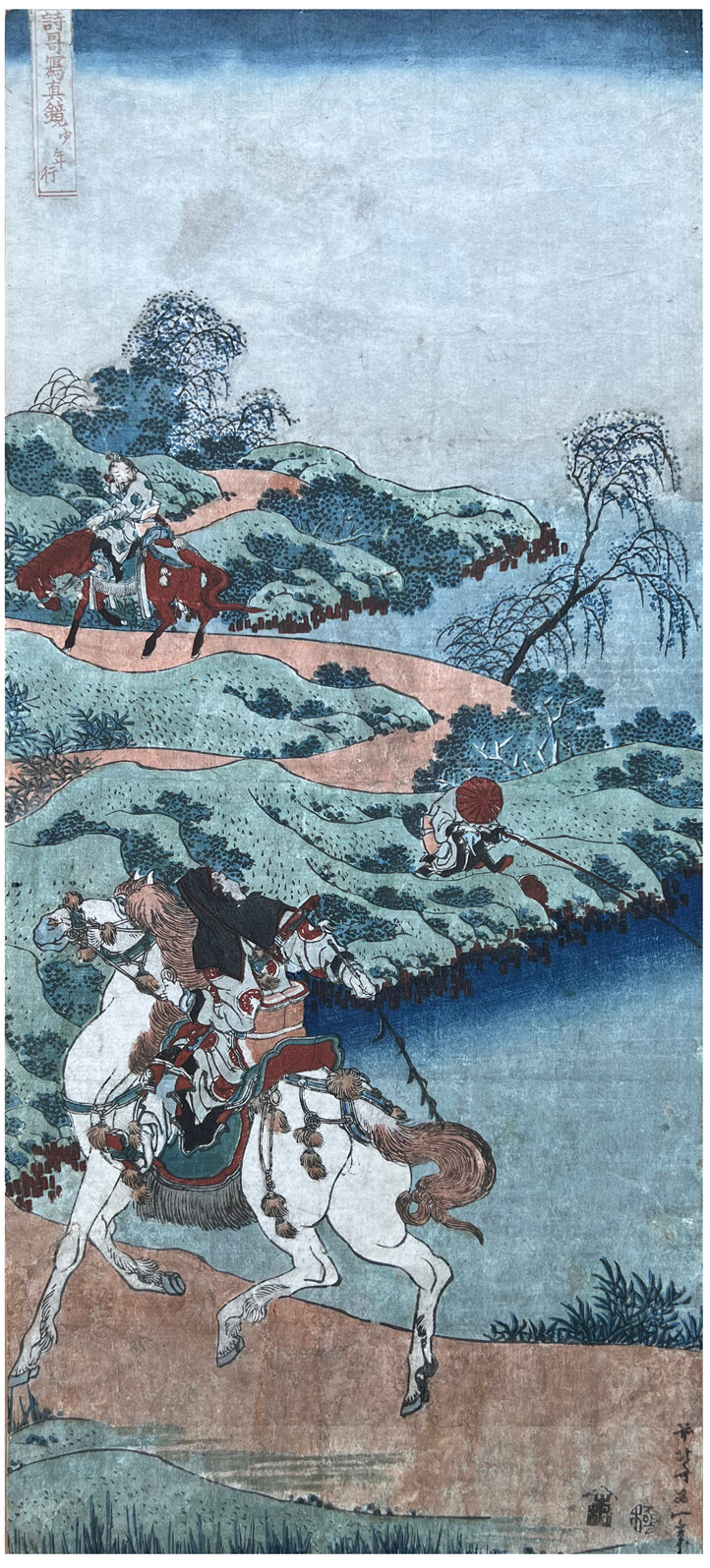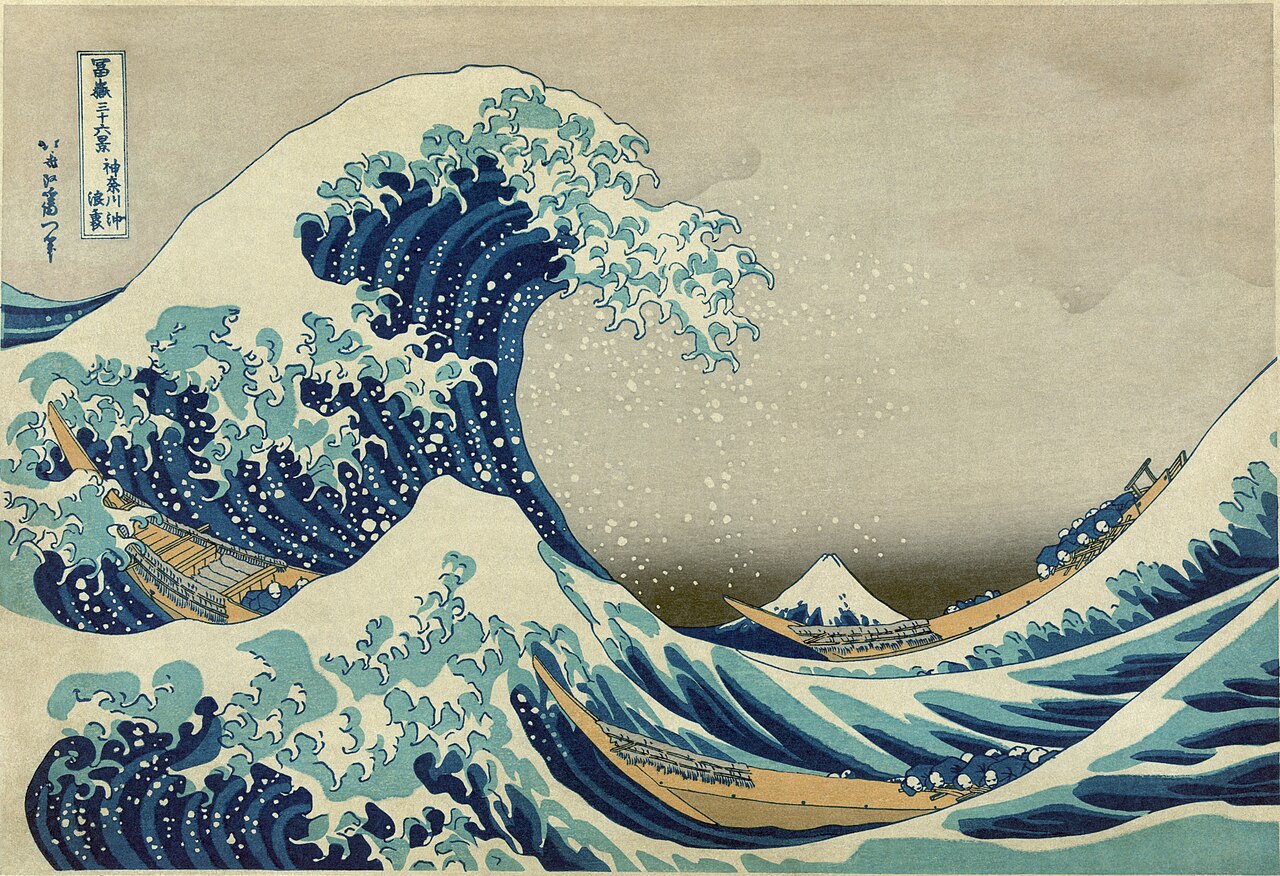The Dramatic Life of the Master
'From heaven, through this world, to hell, my image should depict everything that exists between heaven and hell.' – Katsushika Hokusai
 Katsushika Hokusai appears to be a man of immeasurable depth of feeling, though outwardly he might seem more like an unruffled surface of water. I would like to meet him. When he went out early in the morning to the cliffside to admire the view of Mount Fuji and paint it for the hundredth time. Each time from a slightly different angle, trying to highlight and reveal something else. Searching for that one, perfect brush stroke that would be absolute. Soothing his pain over his beloved who died young, somewhat absorbing the majesty and power of nature.
Katsushika Hokusai appears to be a man of immeasurable depth of feeling, though outwardly he might seem more like an unruffled surface of water. I would like to meet him. When he went out early in the morning to the cliffside to admire the view of Mount Fuji and paint it for the hundredth time. Each time from a slightly different angle, trying to highlight and reveal something else. Searching for that one, perfect brush stroke that would be absolute. Soothing his pain over his beloved who died young, somewhat absorbing the majesty and power of nature.
Did he feel then that his life was cursed? When, 10 years after burying his wife, he fell in love again, remarried, and shortly thereafter had to bury his beloved again. Along with two children. Did he think life was mocking him? The deep pain visible in his works was overcome by hard work, striving for perfection, and that special, deep philosophical view of life and nature. He would indeed be an interesting person to talk to. I will not be fully able to do so. But thanks to his works, I can try to partially feel and understand what this outstanding artist and philosopher thought then, early in the morning standing on the cliff and painting the landscape of Mount Fuji for the hundredth time.
Most of us have seen somewhere an "image" of tumultuous waves in the Japanese style. It appears on t-shirts, mugs, posters, tattoos, as decoration in app interfaces, etc. This "image" is actually one of the more important masterpieces of world painting, which "did" a lot of things as the first in history.

When "The Great Wave off Kanagawa," as it is referred to, first collided with the public's imagination, its violent, frothy crests and dramatically inclined fishing boats, showing the untamed force of nature, initiated a new chapter in Japanese painting, and partly the world's. This work by Katsushika Hokusai, one of the most prolific and globally recognized masters of ukiyo-e, created around 1830, has become an icon not only of Japanese art but a global cultural heritage inspiring artists such as Monet and Van Gogh.
 Who was the man behind this turbulent scene, which seems to unleash equally strong emotions today as on the day of its creation? Katsushika Hokusai, an artist with countless names and a tireless explorer of form and color, was a figure who lived a life as dynamic and changing as the waves he so masterfully captured. Born in Edo (now Tokyo) in 1760, Hokusai lived through eight decades of turbulent changes, from feudal Japan to moments when the country began to open up to the West, and his works evolved from traditional portraits of actors and beautiful women to expansive landscapes that revolutionized ukiyo-e.
Who was the man behind this turbulent scene, which seems to unleash equally strong emotions today as on the day of its creation? Katsushika Hokusai, an artist with countless names and a tireless explorer of form and color, was a figure who lived a life as dynamic and changing as the waves he so masterfully captured. Born in Edo (now Tokyo) in 1760, Hokusai lived through eight decades of turbulent changes, from feudal Japan to moments when the country began to open up to the West, and his works evolved from traditional portraits of actors and beautiful women to expansive landscapes that revolutionized ukiyo-e.
 His "Great Wave" is more than just an image; it is a manifestation of the life of an artist who constantly strived for perfection, never being satisfied with the level achieved. This work, like all of Hokusai's creations, is a testament not only to technical proficiency but also to a deep understanding and respect for the dynamics of nature, human experience, and the transience of everything that exists. In this article, we will delve into the life and legacy of Hokusai, exploring how his personal experiences, perseverance in perfecting his craft, and endless curiosity influenced a body of work that continues to fascinate and inspire worldwide.
His "Great Wave" is more than just an image; it is a manifestation of the life of an artist who constantly strived for perfection, never being satisfied with the level achieved. This work, like all of Hokusai's creations, is a testament not only to technical proficiency but also to a deep understanding and respect for the dynamics of nature, human experience, and the transience of everything that exists. In this article, we will delve into the life and legacy of Hokusai, exploring how his personal experiences, perseverance in perfecting his craft, and endless curiosity influenced a body of work that continues to fascinate and inspire worldwide.
'At about the age of six, I had the mania of drawing the shapes of things. When I was fifty, I had published a multitude of drawings, but nothing I did before the age of sixty was worthy of attention. At seventy, I began to understand the true nature of animals, plants, trees, birds, fish, and insects. Consequently, by the age of eighty, I will have made even more progress, and by ninety, I will penetrate their very essence. At one hundred, I may truly have a divine understanding of them, while at one hundred and ten, everything I create, a dot, a line, will come to life. Who knows? Perhaps I will even live to one hundred and ten. Everything is written in the sky...' – Katsushika Hokusai
Youth (1760-1779)
 In the city of Edo, which today we know as Tokyo, in the October aura of 1760, a child was born who was to become one of the most extraordinary artists of his time. Born into an artisan family, young Tokitarō, later known as Katsushika Hokusai, was surrounded from the earliest years by tools and craft materials, which inevitably led him onto the artistic path.
In the city of Edo, which today we know as Tokyo, in the October aura of 1760, a child was born who was to become one of the most extraordinary artists of his time. Born into an artisan family, young Tokitarō, later known as Katsushika Hokusai, was surrounded from the earliest years by tools and craft materials, which inevitably led him onto the artistic path.
His father, Nakajima Ise, created mirrors for the shogunate, the power elite in feudal Japan, which could have influenced the young Hokusai, endowing him with a sense of aesthetics and attention to detail. However, the real turning point in his life came when Hokusai began to show an early interest in art, especially painting. Very quickly, this hobby outgrew mere fascination and became a passion that was to completely dominate Tokitarō's life.
 From the tender age of six, Hokusai began to paint, and his extraordinary ability to mimic nature and the life around him quickly drew attention. This interest became an obsession that shaped every day of the young artist's life. When he was twelve, his father, recognizing his son's unusual talent, sent him to work in a bookstore and lending library, a popular place for the middle and upper classes, which allowed Hokusai to come into contact with literature and printed art, broadening his artistic horizons.
From the tender age of six, Hokusai began to paint, and his extraordinary ability to mimic nature and the life around him quickly drew attention. This interest became an obsession that shaped every day of the young artist's life. When he was twelve, his father, recognizing his son's unusual talent, sent him to work in a bookstore and lending library, a popular place for the middle and upper classes, which allowed Hokusai to come into contact with literature and printed art, broadening his artistic horizons.
 All this was just a prologue to the moment that defined his life. At the age of eighteen, after years of self-study in wood carving, he became a pupil of Katsukawa Shunshō, a distinguished master of ukiyo-e, a style that Hokusai would ultimately master to perfection. Shunshō not only taught him block printing techniques but also introduced him to the world of kabuki theater and portraying beautiful women, which became later motifs of his works. It was under Shunshō's guidance that Hokusai began to form his unique artistic identity, which in time brought him fame far beyond the borders of Japan.
All this was just a prologue to the moment that defined his life. At the age of eighteen, after years of self-study in wood carving, he became a pupil of Katsukawa Shunshō, a distinguished master of ukiyo-e, a style that Hokusai would ultimately master to perfection. Shunshō not only taught him block printing techniques but also introduced him to the world of kabuki theater and portraying beautiful women, which became later motifs of his works. It was under Shunshō's guidance that Hokusai began to form his unique artistic identity, which in time brought him fame far beyond the borders of Japan.
 But the road to mastery was not easy. The young artist spent years refining his skills, experimenting, and learning from every possible book and observation of daily life. These early years, full of learning and discovery, laid the foundation for Hokusai's remarkable career, an artist who never stopped being a student of the world around him, drawing inspiration from every aspect of life to create works that continue to astonish with their beauty and depth.
But the road to mastery was not easy. The young artist spent years refining his skills, experimenting, and learning from every possible book and observation of daily life. These early years, full of learning and discovery, laid the foundation for Hokusai's remarkable career, an artist who never stopped being a student of the world around him, drawing inspiration from every aspect of life to create works that continue to astonish with their beauty and depth.
Growth and Experiments (1798-1820)
The year 1798 was a turning point for Hokusai, initiating one of the most exciting periods in his life and career.  He left the Katsukawa school, a decision not devoid of drama. This move symbolized not just a physical detachment from the traditional master-pupil bonds but also an artistic emancipation, opening up space for Hokusai to experiment and find his own voice.
He left the Katsukawa school, a decision not devoid of drama. This move symbolized not just a physical detachment from the traditional master-pupil bonds but also an artistic emancipation, opening up space for Hokusai to experiment and find his own voice.
During this time, Hokusai began to explore European influences, especially after encountering French and Dutch copper engravings that had made their way to Japan despite the sakoku policy of isolating the country from the rest of the world. These European influences, especially the application of perspective and play with light, were reflected in his works, which started to deviate from the traditional ukiyo-e subjects.
Hurtful Losses
 In the life of Katsushika Hokusai, as in his art, contrasts dominated - from dazzling successes to severe tragedies. The first of these came in the 1790s when his first wife died. Although little is known about the details of this relationship, the loss of a life partner must have deeply affected the artist, who at that time was just beginning to shape his artistic identity. This personal tragedy, though leaving behind a shadow of sorrow, likely contributed to a deeper understanding of human emotions, which was reflected in his later works.
In the life of Katsushika Hokusai, as in his art, contrasts dominated - from dazzling successes to severe tragedies. The first of these came in the 1790s when his first wife died. Although little is known about the details of this relationship, the loss of a life partner must have deeply affected the artist, who at that time was just beginning to shape his artistic identity. This personal tragedy, though leaving behind a shadow of sorrow, likely contributed to a deeper understanding of human emotions, which was reflected in his later works.
Less than ten years later, in 1797, Hokusai married again, opening a new chapter in his life. Unfortunately, this marriage also ended in tragedy, as his second wife died shortly after. These recurring losses of close ones could have shaped in Hokusai an even greater sensitivity to the transience of human life and impermanence, themes often appearing in his works. Struggling with personal pain, Hokusai did not stop creating, and his art became both an escape and a way to process these experiences.
It is also known that at least two of his five children also died in childhood.
Change of Themes
 These deeply personal tragedies certainly translate into the intensity and emotional saturation of his later works. One could suppose that direct experience of loss allowed him to approach everyday life and death themes with greater empathy, becoming a key element of his creation. Hokusai's art from this period emanates a profound understanding of human experience, reflecting both his personal experiences and broader, universal truths.
These deeply personal tragedies certainly translate into the intensity and emotional saturation of his later works. One could suppose that direct experience of loss allowed him to approach everyday life and death themes with greater empathy, becoming a key element of his creation. Hokusai's art from this period emanates a profound understanding of human experience, reflecting both his personal experiences and broader, universal truths.
 Additionally, Hokusai began to more boldly explore the daily life of ordinary Japanese people, which was in a sense a reflection of his own life experiences. Works from this period showcase a wide range of emotions and situations, from intimate genre scenes to dramatic landscapes where nature plays an equally important role as man. This insightful look at the human condition, combined with technical mastery, ensures Hokusai's works resonate with audiences worldwide to this day.
Additionally, Hokusai began to more boldly explore the daily life of ordinary Japanese people, which was in a sense a reflection of his own life experiences. Works from this period showcase a wide range of emotions and situations, from intimate genre scenes to dramatic landscapes where nature plays an equally important role as man. This insightful look at the human condition, combined with technical mastery, ensures Hokusai's works resonate with audiences worldwide to this day.
In these years, Hokusai started to create works that focused on landscapes and scenes from everyday life, significantly diverging from the previously dominant ukiyo-e themes that mainly concentrated on portraits of kabuki actors and beautiful women. The series "Thirty-Six Views of Mount Fuji," started in 1820, represents the culmination of this period of experiments and searches. Presenting the famous mountain from various perspectives and at different times of the year, Hokusai not only paid tribute to the natural beauty of Japan but also demonstrated his mastery in manipulating colors and form.
Hokusai's Life Philosophy and Personal Tragedies
 The core of Katsushika Hokusai's life philosophy was the relentless pursuit of perfection, regardless of the obstacles life placed before him. His approach to art and existence was a reflection of Zen Buddhism, which emphasizes the importance of continuous development and self-improvement. For Hokusai, every line drawn with a brush, every new day, was another opportunity to push the boundaries of his capabilities. This life philosophy became a guidepost for him, allowing for creative exploration and artistic evolution, even in the face of personal tragedies that met him on the path of life.
The core of Katsushika Hokusai's life philosophy was the relentless pursuit of perfection, regardless of the obstacles life placed before him. His approach to art and existence was a reflection of Zen Buddhism, which emphasizes the importance of continuous development and self-improvement. For Hokusai, every line drawn with a brush, every new day, was another opportunity to push the boundaries of his capabilities. This life philosophy became a guidepost for him, allowing for creative exploration and artistic evolution, even in the face of personal tragedies that met him on the path of life.
 The personal tragedies that Hokusai had to confront – the death of loved ones, changing professional fortunes, illnesses – did not stop him, but became a catalyst for his creative expression. He transformed pain and loss into beauty that spoke to audiences worldwide, regardless of cultural context. His ability to find beauty in the everyday, to see the universal truth in simple moments of life, was a direct result of this philosophy. The constant striving for perfection, even if it was to be achieved on the verge of life, testified to an extraordinary spirit and undying passion.
The personal tragedies that Hokusai had to confront – the death of loved ones, changing professional fortunes, illnesses – did not stop him, but became a catalyst for his creative expression. He transformed pain and loss into beauty that spoke to audiences worldwide, regardless of cultural context. His ability to find beauty in the everyday, to see the universal truth in simple moments of life, was a direct result of this philosophy. The constant striving for perfection, even if it was to be achieved on the verge of life, testified to an extraordinary spirit and undying passion.
 For Hokusai, life and art were inseparably linked with the process of continuous learning. He considered himself an eternal student, who even in his later years could state, "Nothing I did before the age of seventy was worthy of attention." This humility, combined with the continual work on perfecting his craft, was a reflection of his life philosophy. The pursuit of perfection was not an end in itself for him but a journey – a process where each step forward was valuable regardless of the ultimate perfection. This philosophical stance ensures that Hokusai remains not just a legendary figure in the history of art but also an inspiration to all those who strive for mastery in their fields, reminding them that the road to perfection is an endless journey.
For Hokusai, life and art were inseparably linked with the process of continuous learning. He considered himself an eternal student, who even in his later years could state, "Nothing I did before the age of seventy was worthy of attention." This humility, combined with the continual work on perfecting his craft, was a reflection of his life philosophy. The pursuit of perfection was not an end in itself for him but a journey – a process where each step forward was valuable regardless of the ultimate perfection. This philosophical stance ensures that Hokusai remains not just a legendary figure in the history of art but also an inspiration to all those who strive for mastery in their fields, reminding them that the road to perfection is an endless journey.
Peak of Career and Famous Works (1821-1839)
 The years 1821 to 1839 marked a period in which Katsushika Hokusai, already recognized as a distinguished artist, reached the pinnacle of his career. It was then that he created his most recognizable work - "Thirty-Six Views of Mount Fuji," including the immortal "Great Wave off Kanagawa."
The years 1821 to 1839 marked a period in which Katsushika Hokusai, already recognized as a distinguished artist, reached the pinnacle of his career. It was then that he created his most recognizable work - "Thirty-Six Views of Mount Fuji," including the immortal "Great Wave off Kanagawa."
The series "Thirty-Six Views of Mount Fuji" not only made Hokusai famous on a global scale but also initiated a revolution in ukiyo-e through the innovative use of Prussian blue. This intense, synthetic pigment, which arrived in Japan from the West, allowed Hokusai to achieve depth and saturation of colors previously unseen in Japanese prints. The use of this pigment in "The Great Wave" and other works from the series gave them a unique dynamism and freshness, capturing the attention of audiences both in Japan and abroad.
 This period not only solidified Hokusai's position as one of the greatest masters of ukiyo-e but also demonstrated how deeply an artist's personal experiences can influence his works, making them a universal message about transience, beauty, and the human condition. Despite all adversities, Hokusai remained true to his philosophy, believing that art is not just a form of expression but also a means to transcend the boundaries of the self and reach a deeper understanding of the world.
This period not only solidified Hokusai's position as one of the greatest masters of ukiyo-e but also demonstrated how deeply an artist's personal experiences can influence his works, making them a universal message about transience, beauty, and the human condition. Despite all adversities, Hokusai remained true to his philosophy, believing that art is not just a form of expression but also a means to transcend the boundaries of the self and reach a deeper understanding of the world.
Last Years and Legacy (1840-1849)
 In the last decade of his life, from 1840 to 1849, Katsushika Hokusai continued his unending artistic journey, despite challenges related to old age and illness. His unwavering passion for art and ceaseless pursuit of perfection were present until the end. During this time, Hokusai used many names, reflecting his philosophical journey and constant search for a new artistic identity. From Shunrō ("bright spring") to Gakyō Rōjin Manji ("the old man mad about painting") - each name (he adopted a total of 30) symbolized different stages of his life and artistic evolution. This practice, although common among Japanese artists, was applied by Hokusai in an exceptionally intense manner, evidencing his deep introspection and continual attempt to redefine himself and his art.
In the last decade of his life, from 1840 to 1849, Katsushika Hokusai continued his unending artistic journey, despite challenges related to old age and illness. His unwavering passion for art and ceaseless pursuit of perfection were present until the end. During this time, Hokusai used many names, reflecting his philosophical journey and constant search for a new artistic identity. From Shunrō ("bright spring") to Gakyō Rōjin Manji ("the old man mad about painting") - each name (he adopted a total of 30) symbolized different stages of his life and artistic evolution. This practice, although common among Japanese artists, was applied by Hokusai in an exceptionally intense manner, evidencing his deep introspection and continual attempt to redefine himself and his art.
 The philosophy of striving for perfection was not only an expression of his personal credo but also a deep conviction that guided every brushstroke. Even in his later years, Hokusai expressed the belief that if he could continue his artistic practice, his works would become increasingly perfect with each passing year. He stated that nothing he created before the age of seventy was worthy of attention, and by ninety, he could achieve true excellence. This constant desire for development and refinement of his art was the essence of his existence.
The philosophy of striving for perfection was not only an expression of his personal credo but also a deep conviction that guided every brushstroke. Even in his later years, Hokusai expressed the belief that if he could continue his artistic practice, his works would become increasingly perfect with each passing year. He stated that nothing he created before the age of seventy was worthy of attention, and by ninety, he could achieve true excellence. This constant desire for development and refinement of his art was the essence of his existence.
In these final years, Hokusai created works that not only summarized his life experiences but also expressed his reflections on life, art, and the inevitability of death. Works from this period, full of depth and majesty, are a testament to his unchanging pursuit of capturing the essence of nature and human experience.
Hokusai's last words before his death, expressing regret that he did not have more time to achieve true mastery in art, underscore his life philosophy. "If only I had more time to learn," he said, "I would become a real master." These words are a powerful reminder of his endless passion for art and constant striving for perfection, which remained with him until his final moments.
 Hokusai's legacy, shaped by his countless names, artistic philosophy, and unwavering passion, remains alive. His impact on global art, particularly on the impressionists and later generations of artists, is undeniable. Hokusai not only defined ukiyo-e for future generations but also showed how art can transcend cultural and personal boundaries, becoming a universal language of human experience.
Hokusai's legacy, shaped by his countless names, artistic philosophy, and unwavering passion, remains alive. His impact on global art, particularly on the impressionists and later generations of artists, is undeniable. Hokusai not only defined ukiyo-e for future generations but also showed how art can transcend cultural and personal boundaries, becoming a universal language of human experience.
"If you continually make progress in drawing, both by copying the works of others and drawing from nature, you will eventually find your own way of expressing yourself." – Katsushika Hokusai
How Hokusai's Works Inspired Great European Artists
 Hokusai's works began to gain international fame in Europe at the end of the 19th century when art from Japan became accessible to Western audiences, mainly thanks to Japan's policy of opening up to the world. His impact on European art, especially on the impressionists, was significant. Artists such as Claude Monet, Vincent van Gogh, Edgar Degas, and many others were fascinated by ukiyo-e techniques, use of color, and unique perspectives and compositions that Hokusai employed in his works. "The Great Wave off Kanagawa" and other works from the series of views of Mount Fuji inspired European artists to experiment with new painting methods, perspectives, and printing techniques, contributing to the development of new directions in art, such as impressionism.
Hokusai's works began to gain international fame in Europe at the end of the 19th century when art from Japan became accessible to Western audiences, mainly thanks to Japan's policy of opening up to the world. His impact on European art, especially on the impressionists, was significant. Artists such as Claude Monet, Vincent van Gogh, Edgar Degas, and many others were fascinated by ukiyo-e techniques, use of color, and unique perspectives and compositions that Hokusai employed in his works. "The Great Wave off Kanagawa" and other works from the series of views of Mount Fuji inspired European artists to experiment with new painting methods, perspectives, and printing techniques, contributing to the development of new directions in art, such as impressionism.
 Claude Monet, one of the most recognizable impressionists, was known for his fascination with Japanese art, evident in his vast collection of Japanese prints. Monet not only collected Hokusai's works but also drew inspiration from them in creating his own paintings. Especially in his works depicting water lilies and the Japanese bridge in his garden at Giverny, the influence of the Japanese master can be seen, particularly in the use of color and light.
Claude Monet, one of the most recognizable impressionists, was known for his fascination with Japanese art, evident in his vast collection of Japanese prints. Monet not only collected Hokusai's works but also drew inspiration from them in creating his own paintings. Especially in his works depicting water lilies and the Japanese bridge in his garden at Giverny, the influence of the Japanese master can be seen, particularly in the use of color and light.

Vincent van Gogh, a Post-Impressionist, expressed his admiration for Hokusai by directly copying some of the Japanese prints in his works. Van Gogh was fascinated by the way Japanese artists, including Hokusai, depicted nature and everyday life, which influenced his own approach to painting landscapes and exploring color. Such inspirations can be seen in "Almond Blossoms," drawing inspiration from Hokusai's cherry blossom images and other ukiyo-e artists.
 Edgar Degas, another leading post-impressionist, also drew inspiration from Japanese print art. His works often feature compositions and perspectives reminiscent of ukiyo-e, including experiments with perspective and framing, which can be attributed to Hokusai's influence.
Edgar Degas, another leading post-impressionist, also drew inspiration from Japanese print art. His works often feature compositions and perspectives reminiscent of ukiyo-e, including experiments with perspective and framing, which can be attributed to Hokusai's influence.
Furthermore, Hokusai's works may have influenced Henri de Toulouse-Lautrec, especially in his graphics and posters. Toulouse-Lautrec, like Hokusai, often depicted scenes from everyday life, using strong outlines and bright colors to capture dynamics and movement.
 Traces of Hokusai can also be found in contemporary pop culture. One of the most famous anime works dedicated to the life and work of Hokusai is the film "Miss Hokusai" (Japanese: 百日紅, Sarusuberi), which tells the story of Hokusai's daughter, O-Ei, who was also a talented artist. The film, based on the manga "Sarusuberi" by Hinako Sugiura, focuses on family relationships and artistic pursuits against the backdrop of the turbulent Edo period, showing both the personal and professional side of Hokusai and his daughter's life.
Traces of Hokusai can also be found in contemporary pop culture. One of the most famous anime works dedicated to the life and work of Hokusai is the film "Miss Hokusai" (Japanese: 百日紅, Sarusuberi), which tells the story of Hokusai's daughter, O-Ei, who was also a talented artist. The film, based on the manga "Sarusuberi" by Hinako Sugiura, focuses on family relationships and artistic pursuits against the backdrop of the turbulent Edo period, showing both the personal and professional side of Hokusai and his daughter's life.
 Another manga that explores Hokusai's life is "Hokusai" by Shotaro Ishinomori. This manga series focuses more directly on Hokusai's life, showcasing his development as an artist and the impact he had on Japanese art.
Another manga that explores Hokusai's life is "Hokusai" by Shotaro Ishinomori. This manga series focuses more directly on Hokusai's life, showcasing his development as an artist and the impact he had on Japanese art.
Hokusai: Master of the Wave Transforming the World
 Katsushika Hokusai, an artist whose life was as dynamic and variable as the waves he so masterfully portrayed, undoubtedly left an indelible mark on the canvas of art history. His continual search for new techniques, styles, and themes made him a figure who transcended the boundaries of epochs and cultures, proving that true art is universal and immutable. Through his works, Hokusai not only defined ukiyo-e for future generations but also inspired artists worldwide, from impressionists to contemporary manga and anime creators. His ability to transform personal tragedies and experiences into art that resonates with universal truths about human life is evidence of the extraordinary strength and depth of his works.
Katsushika Hokusai, an artist whose life was as dynamic and variable as the waves he so masterfully portrayed, undoubtedly left an indelible mark on the canvas of art history. His continual search for new techniques, styles, and themes made him a figure who transcended the boundaries of epochs and cultures, proving that true art is universal and immutable. Through his works, Hokusai not only defined ukiyo-e for future generations but also inspired artists worldwide, from impressionists to contemporary manga and anime creators. His ability to transform personal tragedies and experiences into art that resonates with universal truths about human life is evidence of the extraordinary strength and depth of his works.
His life was full of unexpected turns, just like the dynamic scenes he portrayed. Legend has it that on his deathbed, at the age of 90, he expressed a wish for an additional ten years of life, believing that in that time, he could achieve true excellence in art. This may not be surprising, considering his life philosophy, but it highlights how deeply he was committed to his craft.
>>SEE ALSO SIMILAR ARTICLES:
The Unyielding Courage of Higuchi Ichiyo: A Solitary Rebellion Against the Oppression of Women in Japan
The Author of the World's First Novel: Meet the Strong and Stubborn Murasaki Shikibu (Heian, 973)
Mass Art in Japan: The Unbroken Chain from Ukiyo-e to Modern Manga
The History and Philosophy of Bunraku: From Puppet Theatre to Nico Nico and Anime


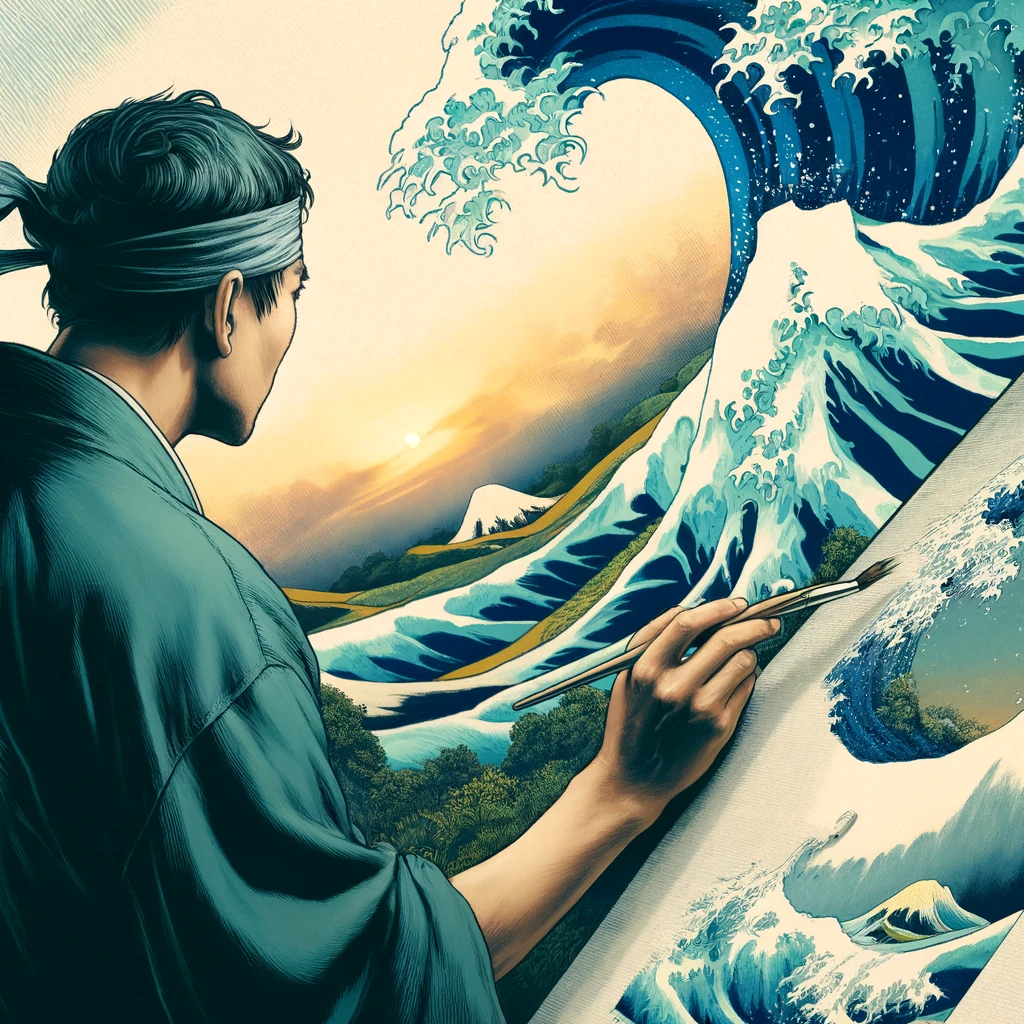
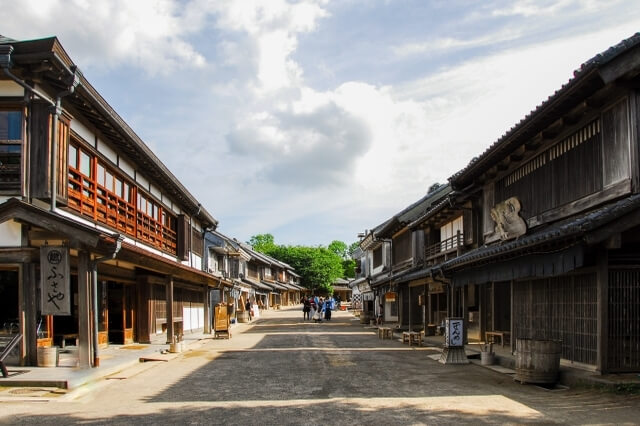

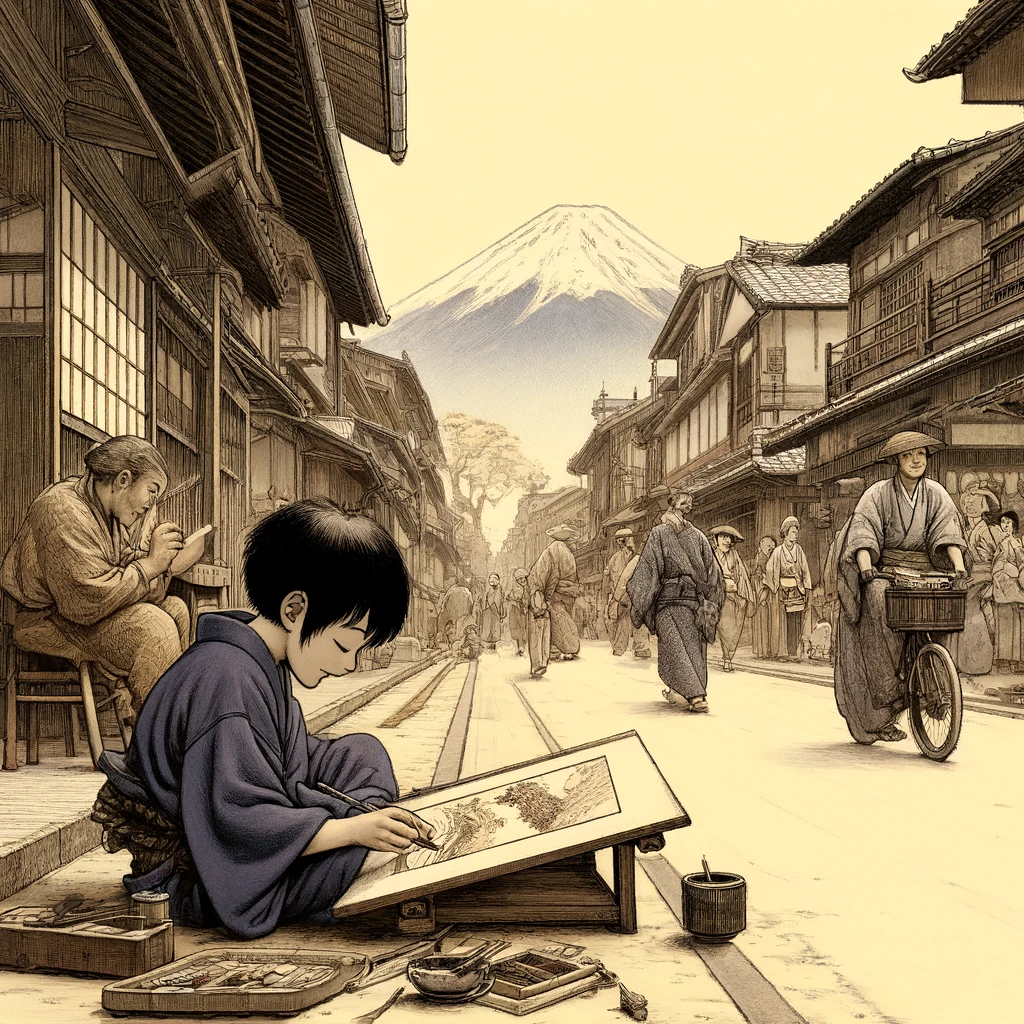
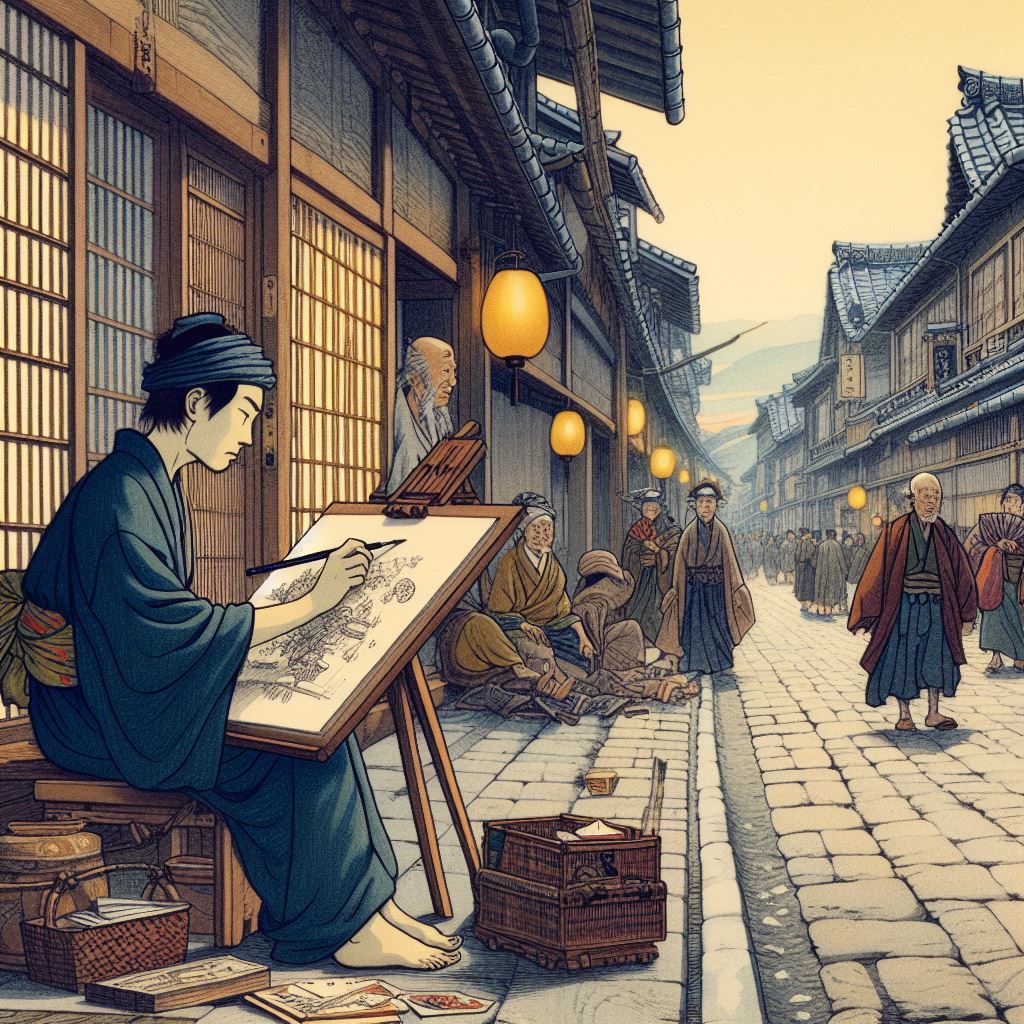
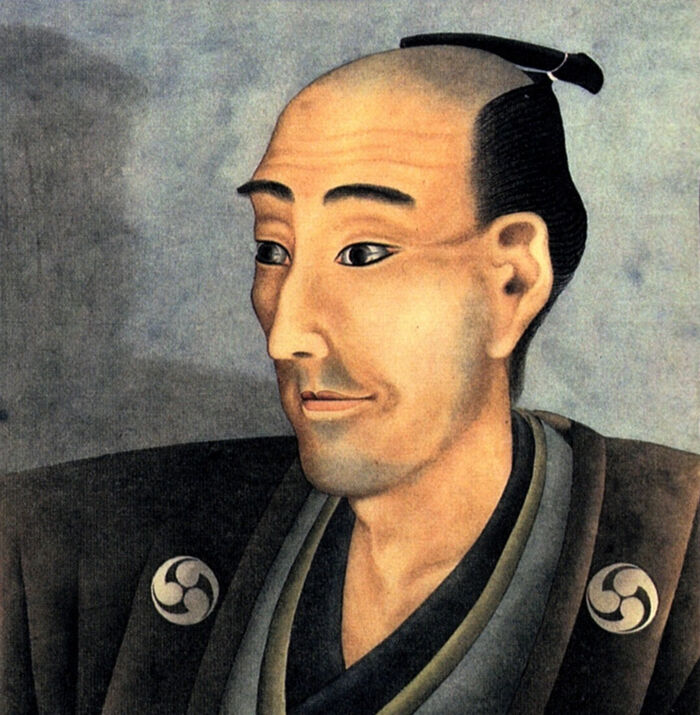
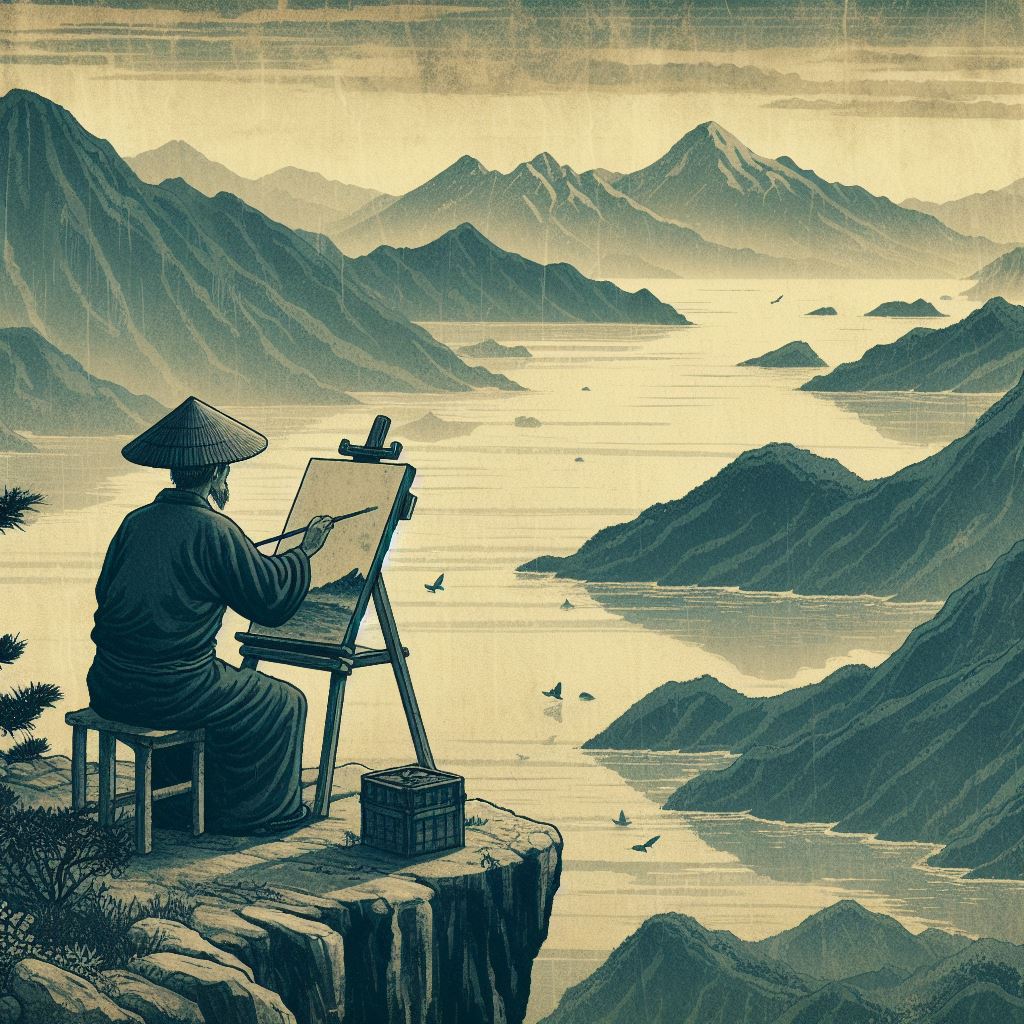
These deeply personal tragedies certainly translate into the intensity and emotional saturation of his later works. One could suppose that direct experience of loss allowed him to approach everyday life and death themes with greater empathy, becoming a key element of his creation. Hokusai's art from this period emanates a profound understanding of human experience, reflecting both his personal experiences and broader, universal truths.
